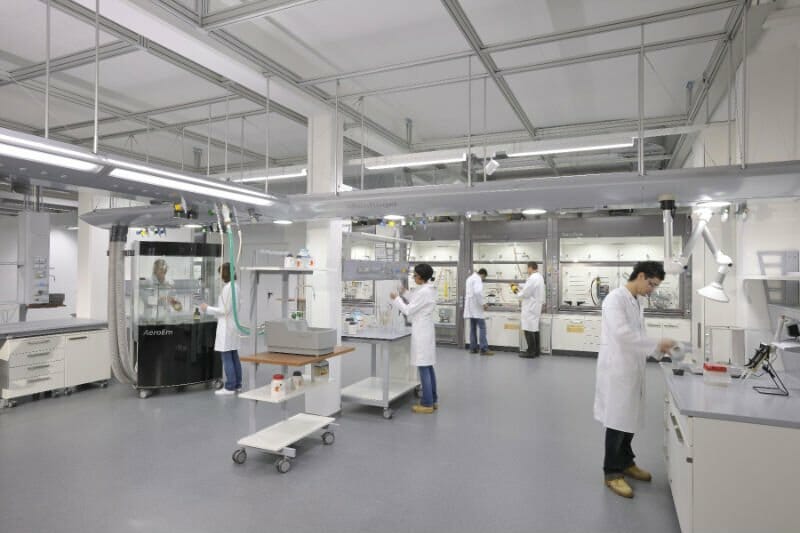News
Efficient laboratory design for occupant health
 Laboratories are the modern cathedrals of science. Within their hallowed halls, researchers solve society’s problems and help ensure a safer, healthier, more sustainable tomorrow. But what about the researchers themselves? How do we ensure that the scientists, technicians, and lab managers who perform this vital work remain safe?
Laboratories are the modern cathedrals of science. Within their hallowed halls, researchers solve society’s problems and help ensure a safer, healthier, more sustainable tomorrow. But what about the researchers themselves? How do we ensure that the scientists, technicians, and lab managers who perform this vital work remain safe?
Good laboratory design is simultaneously effective and efficient. And when it’s well-executed, it also saves money. Here are a few of the tools we use to enhance the efficiency of laboratories.
Natural ventilation
Also called passive ventilation, this strategy pairs good design with knowledge of the local climate to encourage the natural movement of air through a building. While some office buildings in the right locations can rely exclusively on natural ventilation methods, the special demands of laboratories usually mean that these techniques represent part of a comprehensive ventilation scheme.
The Department of Energy’s Energy Systems Integration Facility, for example, relies on a number of innovative technologies, including natural ventilation, to promote efficiency and safety. It’s so efficient, in fact, that is holds LEED Platinum status and was recognized as R&D Magazine‘s 2014 Laboratory of the Year.
Intelligent exhaust strategies
It used to be the case that laboratory exhausts were designed according to worst-case scenarios. After all, when you’re working with potentially hazardous chemicals and biological substances, you can never be too careful. But such an all-or-nothing approach isn’t cost-effective, and in most cases, it’s not necessary.
Take the University of Southampton’s Synthetic Chemistry Building. Based on tests performed at CPP, engineers at KJ Tait designed and implemented a wind-responsive variable air volume (VAV) exhaust system that currently saves the university approximately £47,000 ($US 75,000) per year in energy consumption. The option to operate fans at full capacity remains, but adjusting them according to the actual conditions is both smart and safe.
Air quality permitting
A major hurdle that all buildings, including laboratories, face is securing a construction permit, a process that’s easier said than done when exhaust is part of the equation. Not only do suboptimal exhaust systems endanger one’s neighbors, but bad planning could mean that a lab’s own pollution re-enters the facility, endangering occupants.
Air permitting convinces federal, state, and local authorities that a building’s design is safe and complies with appropriate regulations. But it’s not just a matter of ticking all of the right boxes, it’s also about being a good steward of one’s environment. And that includes both neighbors and occupants.
When you design and build a new laboratory, you’re not just responsible to financial stakeholders: You owe it to your future clients and employees to ensure that it’s a safe and healthy place to work. Contact CPP today to learn how we can help you design a laboratory that is safe, comfortable, and efficient.
